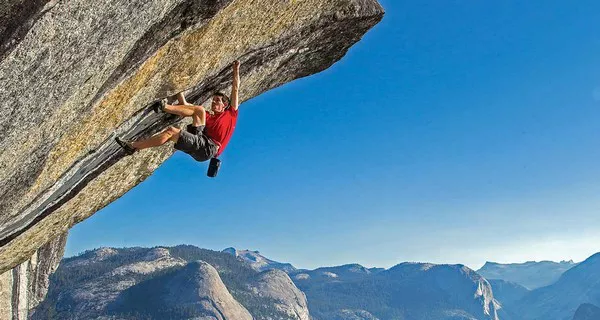In the realm of rock climbing, there exists a daring and highly specialized discipline known as free solo climbing. Unlike traditional climbing methods that involve ropes, harnesses, and protective gear, free soloing is a form of climbing where the climber ascends sheer rock faces alone and without any safety equipment. It is considered the purest form of climbing, demanding unparalleled skill, focus, and a profound connection with both body and mind. However, the allure of this extreme sport is matched by its inherent risks, making it a subject of fascination and debate within the climbing community and beyond.
Defining Free Solo Climbing
Free solo climbing, simply put, is climbing without any form of artificial aid or protection. The climber relies solely on their physical and mental abilities to navigate the rock face and reach the summit. Unlike other climbing styles that utilize ropes and equipment to protect against falls, free solo climbers accept the full consequences of a potential mistake, as any error can result in severe injury or even death. This style of climbing demands exceptional technical proficiency, strength, endurance, and an unwavering sense of control.
The Psychology of Free Soloing
To understand why climbers choose to engage in free soloing, one must delve into the unique psychological makeup of those who pursue this extreme discipline. The decision to climb without ropes is deeply personal and often tied to a complex blend of factors, including a thirst for the ultimate challenge, a desire for freedom and self-reliance, and a profound connection with nature.
Many free solo climbers describe a heightened sense of focus and clarity while ascending a rock face. The absence of safety equipment forces the climber to be fully present in the moment, attuned to the intricacies of each movement and the nuances of the terrain. This intense level of concentration creates a state of flow, where external distractions fade away, leaving only the climber and the rock.
Notable Free Solo Climbers
Throughout the history of climbing, certain individuals have distinguished themselves as pioneers and icons of free soloing. One such figure is Alex Honnold, whose groundbreaking ascent of El Capitan’s 3,000-foot granite wall in Yosemite National Park without ropes captured the world’s attention. Honnold’s climb, depicted in the documentary film “Free Solo,” showcased both the extraordinary physical demands of free soloing and the mental fortitude required to execute such a feat.
Other notable free solo climbers include Dean Potter, who pushed the boundaries of the sport with his audacious ascents, and John Bachar, a legendary figure renowned for his commitment to free soloing and bold first ascents. These climbers have left an indelible mark on the world of climbing, inspiring awe and admiration while highlighting the risks and rewards of pursuing this unforgiving discipline.
The Risks and Consequences
Despite its allure, free solo climbing is undeniably dangerous. The consequences of a fall while free soloing are potentially catastrophic, with no margin for error. Even the most skilled climbers are not immune to accidents, and the stakes are inherently high. The inherent risks associated with free soloing have sparked debate within the climbing community and prompted discussions about the ethical considerations surrounding the pursuit of such a perilous activity.
Accidents involving free solo climbers often have profound impacts on the entire climbing community, serving as sobering reminders of the fragility of life and the harsh realities of pushing the limits of human capability. However, these tragedies have also led to increased awareness of safety practices and risk management within the climbing community, emphasizing the importance of preparation, experience, and respect for the inherent dangers of the sport.
Ethics and Perspectives
The ethics of free solo climbing are complex and subject to interpretation. While some view free soloing as the ultimate expression of personal freedom and individual achievement, others question the wisdom of engaging in an activity with such extreme consequences. Critics argue that the inherent risks associated with free soloing are unjustifiable, placing unnecessary burdens on rescuers and loved ones in the event of an accident.
Furthermore, the depiction of free solo climbing in media and popular culture has sparked discussions about responsible storytelling and the potential influence on aspiring climbers. Documentaries like “Free Solo” have brought the world of free solo climbing into the mainstream, captivating audiences while also raising awareness about the sport’s inherent dangers.
Conclusion
Free solo climbing represents the pinnacle of human achievement and the embodiment of courage, skill, and determination. It is a discipline that pushes the boundaries of physical and mental endurance, demanding unwavering commitment and an unparalleled level of focus. However, the risks associated with free solo climbing are profound, requiring climbers to confront the potential consequences of their actions with humility and respect.
Ultimately, the world of free solo climbing is a testament to the indomitable spirit of exploration and the relentless pursuit of greatness. While not without controversy, free solo climbing continues to captivate and inspire, challenging perceptions and redefining what is possible in the vertical realm. As climbers continue to push the limits of human capability, the legacy of free soloing will endure, leaving an enduring mark on the landscape of adventure sports and human achievement.

